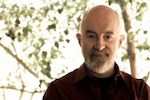- You are here:
- Home »
- Blog »
- Joint Health / Pain »
- The Case for Doing Less
The Case for Doing Less
I imagine that some of you have had some ache or pain, visited a doctor and were told some variation of “take it easy, stop (insert activity), take this medication and if you’re not better in a month, come back to see me.”
Resonate?
The “take it easy” is sometimes referred to as “relative rest”. You’re not inactive but you’re not doing things that tend to produce symptoms.
Some of you followed the advice, some didn’t, some sort of followed it (which is actually the same as not following it).
For those of you who followed the advice, some percentage of you actually felt okay after a month so you did what any reasonable person would do. You returned to doing the things you enjoy doing whether that’s running, hiking, gardening, hitting Crossfit, or walking your dog.
And then after a short period of time, your symptoms reappeared.
What happened?
Most of our clients feel that the “relative rest” and meds didn’t work since the symptoms came back.
But I have a different view.
One potential upside of relative rest is you can more easily build up physiologic reserve.
Physiologic reserve is essentially a biological energy supply. You use energy to withstand various physical demands without a significant functional loss and to repair your body from injury.
You use energy for muscle contractions, to resist too much stretch in soft tissues, and to resist the compression loads bones experience among other things.
It’s like a bank account. You draw from the account when you expose your body to physical activities and make deposits by using “relative rest” and make even more deposits with diet and exercise.
When the “balance” dips into the red, you become symptomatic. It doesn’t matter how big the withdrawal is either. In other words, if you write a $10 check when your bank balance is $5, the check will bounce just as hard as it will if you write a $1000 check.
But, the concept of physiologic reserve differs from the bank account analogy in that you can check your bank account and find out how much you have, adjust your spending and prevent checks from bouncing.
With your body, once you’re in the black, you’re apt to feel okay but you won’t know how much “cash” you have to spend.
This is why you have to gradually progress an exercise program and use, for example, a return-to-running program instead of just lacing up and running a 10k.
When you take the doctor’s advice and stop doing things that create symptoms, you can increase your physioloic reserve. But keep in mind that although the “bank balance” has increased enough that you’re not symptomatic, you won’t have enough “cash” to, for example, start running or hiking right away.
If you add exercise to the relative rest period, your physiologic reserve deposits go up even more. This is provided the exercise demand is within your body’s tolerance. And after a month or so of relative rest plus the right kind and amounts of exercise, you might be able to re-start the activities you enjoy.
Thanks for reading.

If you like this article, why not share it with a friend? If you’re interested in coaching services, please contact my colleague Laurie Kertz Kelly for a free, 20-minute Strategy Session by, clicking here. To get my Secret Weapon to fight knee, hip & back pain and stiffness, subscribe for free today.

Doug Kelsey has been a physical therapist and human movement expert since 1981. He is formerly Associate Professor and Assistant Dean for Clinical Affairs at the University of Oklahoma Health Sciences Center and the author of several books. He has conducted over 250 educational seminars for therapists, trainers, physicians, and the public and has presented lectures at national and international scientific and professional conferences. His professional CV is here.
